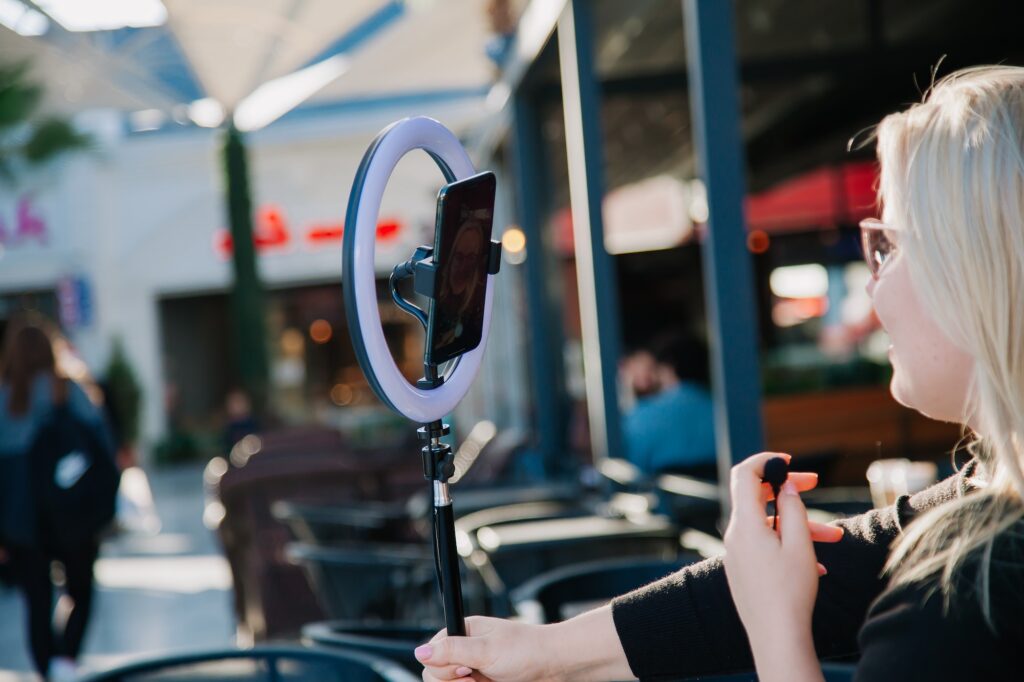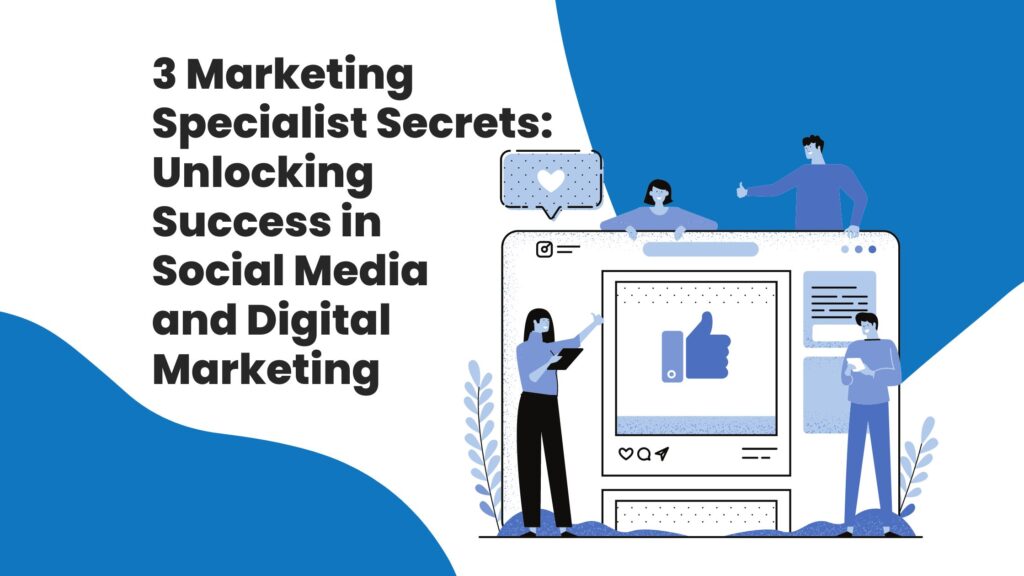Unlocking Success in Social Media and Digital Marketing, Including Video Production and Using a CRM Advice
As a 40-year-old marketing expert with a wealth of experience in social media, video production, and CRM, I’ve witnessed firsthand the rapid evolution of the digital landscape. In my years in the industry, I’ve honed my skills, challenged conventional wisdom, and maintained an edgy, confident approach to social media and digital marketing. Now, I’m eager to share some of that knowledge with you.
In this blog post, we’ll delve into the world of social media, explore the power of video production, and discuss the value of effective CRM systems, all through the lens of social media and digital marketing expertise. Drawing from my own experience and assertive personality, I’ll provide you with actionable tips, real-life examples, and insights that will challenge you to think critically about your current social media and digital marketing strategies.
Together, we’ll navigate these crucial areas with a touch of humor and a no-nonsense attitude, empowering you to elevate your social media and digital marketing game and stand out from the competition. By embracing the strategies we discuss, you’ll be better equipped to forge deeper connections with your audience and ultimately drive your brand’s success in the digital arena.
So, buckle up and get ready to discover the tools and techniques that can transform your social media and digital marketing efforts and propel your business to new heights. And remember, as you read, I’ll be right there with you, challenging your perspectives and inspiring you to achieve greatness in the realm of social media and digital marketing.

Simple Social media
When it comes to social media you might have thousands of followers, but are you truly connecting with them? Focus on building a community, not just a following. Be authentic, engage with your audience, and don’t be afraid to show your human side. After all, people don’t want to interact with faceless brands; they want to connect with real people.
Let’s explore the world of social media and dive into actionable tips, real-life examples, and insights that can help you boost your website’s performance and make a lasting impact on your audience.
-
Platform-Specific Content:
Tailor your content to each social media platform, considering the unique features and audience preferences. For example, on Instagram, Glossier (https://www.instagram.com/glossier/) shares visually appealing product images and user-generated content, while on Twitter, they engage with followers through timely tweets and conversations.
-
Consistent Posting Schedule:
Maintain a consistent posting schedule to keep your audience engaged and informed. Tools like Buffer, Hootsuite, or Sprout Social can help you plan and schedule your content. For instance, Nike (https://twitter.com/Nike) posts regularly on Twitter, sharing a mix of promotional content, user-generated posts, and motivational messages.
-
User-Generated Content (UGC):
Encourage your followers to share content featuring your products or services and repost their contributions. This helps build trust and fosters a sense of community. GoPro (https://www.instagram.com/gopro/) effectively utilizes UGC by featuring stunning photos and videos captured by their customers.
-
Collaborate with Influencers:
Partner with influencers who align with your brand values and can expose your products or services to a larger audience. For example, Daniel Wellington (https://www.instagram.com/danielwellington/) frequently collaborates with influencers to showcase their watches in stylish and aspirational settings.
-
Social Listening:
Monitor social media conversations and mentions of your brand to understand your audience’s sentiments and address their concerns. Tools like Mention or Brandwatch can help you track and analyze these conversations. JetBlue Airways (https://twitter.com/JetBlue) is known for their exceptional social listening and customer service on Twitter.
-
Hashtag Campaigns:
Create and promote branded hashtags to increase visibility and encourage user participation. The #ShareACoke campaign by Coca-Cola (https://www.instagram.com/explore/tags/shareacoke/) is a great example of how a simple hashtag can drive massive engagement and user-generated content.
-
Social Media Contests:
Run contests and giveaways to boost engagement and generate buzz around your brand. For example, Starbucks (https://www.instagram.com/starbucks/) regularly hosts contests, like their annual #RedCupContest, which encourages customers to share creative photos featuring their holiday-themed cups.
-
Educational and Entertaining Content:
Share content that educates, entertains, or inspires your audience. Tasty (https://www.facebook.com/buzzfeedtasty/) by BuzzFeed is a prime example of a brand that consistently shares entertaining and informative cooking videos that resonate with viewers.
-
Analyze and Optimize:
Use social media analytics tools to track your performance and identify areas for improvement. Regularly assess your engagement, reach, and conversions to fine-tune your social media strategy and maximize your impact.
By incorporating these strategies and learning from real-life examples, you can create more effective social media campaigns that not only drive engagement but also boost your website’s performance. Remember, it’s about fostering genuine connections with your audience and creating a community that truly cares about your brand.

Video Production in Social Media and Digital Marketing
Video production? Oh, don’t even get me started on the endless possibilities here. If you’re not utilizing video in your marketing strategy, then you’re missing out on a golden opportunity to captivate your audience. Remember, quality matters, so invest in good equipment and storytelling to make your videos stand out.
Let’s explore the power of video production and provide you with actionable tips, real-life examples, and insights that can help you boost your website’s performance and captivate your audience.
-
Tell Compelling Stories:
Create engaging and emotive stories that resonate with your audience and showcase your brand’s personality. For example, Dove’s “Real Beauty Sketches” (https://www.youtube.com/watch?v=XpaOjMXyJGk) campaign connects with viewers by challenging perceptions of beauty and promoting self-love.
-
Create Tutorials and How-to Videos:
Share informative and educational content that teaches your audience something new or helps them solve a problem. For instance, Adobe Creative Cloud (https://www.youtube.com/user/AdobeCreativeSuite) produces in-depth tutorials on using their software, providing valuable resources to their users.
-
Make Shareable Content:
Produce videos that are easy to share, have a universal appeal, and evoke emotions. The “Mannequin Challenge” (https://www.youtube.com/watch?v=4K4Iv_N9Nno) is an example of a viral trend that captivated audiences worldwide with its simplicity and creativity.
-
Utilize Live Streaming:
Connect with your audience in real-time through platforms like Facebook Live, Instagram Live, or YouTube Live. TEDxSydney (https://www.youtube.com/user/TEDxSydney) live streams their events, allowing viewers from around the world to experience their thought-provoking talks and discussions.
-
Create Product Demos and Testimonials:
Showcase the features and benefits of your products or services through demos, and share customer testimonials to build trust and credibility. For example, Apple (https://www.youtube.com/user/Apple) frequently uses product demonstration videos to highlight their devices’ capabilities and innovative features.
-
Optimize for Search and Social:
Use relevant keywords in your video titles, descriptions, and tags to improve discoverability on search engines and social media platforms. Include a clear call-to-action to drive traffic to your website. Moz (https://www.youtube.com/user/MozHQ) is an excellent example of a brand that optimizes their video content for search and provides valuable resources for their audience.
-
Leverage Video Platforms:
Upload and promote your videos on multiple platforms, such as YouTube, Vimeo, and social media channels, to reach a wider audience. Gary Vaynerchuk (https://www.youtube.com/user/GaryVaynerchuk) shares his content across various platforms, ensuring he connects with viewers wherever they consume video content.
-
Use Captions and Subtitles:
Make your videos accessible to a broader audience by including captions and subtitles, allowing viewers to consume your content with or without sound. For example, The Dodo (https://www.facebook.com/thedodosite/) consistently uses captions on their heartwarming animal videos, ensuring they’re accessible to all viewers.
-
Experiment with Video Formats:
Explore different video formats, such as animated explainer videos, stop-motion, or interactive videos, to keep your content fresh and engaging. Take inspiration from the creative video content by LEGO (https://www.youtube.com/user/LEGO), which utilizes stop-motion animation and various storytelling techniques.
-
Monitor and Analyze:
Use video analytics tools like YouTube Analytics or Wistia to track engagement, view count, and user behavior. Analyze this data to refine your video production strategy and create content that resonates with your audience.
By implementing these video production best practices and learning from real-life examples, you can create captivating content that not only drives engagement but also boosts your website’s performance. Remember, the power of video lies in its ability to connect with your audience on a deeper, more emotional level.

The power of a Customer relationship management (CRM)
Finally, let’s discuss CRM. If you’re not using a CRM system to manage your customer relationships and track their interactions with your brand, you’re essentially flying blind. A well-implemented CRM can be a game-changer, helping you turn leads into loyal customers.
Customer relationship management (CRM) is a critical component of any successful marketing strategy. A robust CRM system can help you nurture relationships, improve customer retention, and boost your website’s performance. Let’s dive into actionable tips, real-life examples, and insights that can help you make the most of your CRM efforts.
-
Personalized Email Campaigns:
Leverage CRM data to segment your audience and send targeted email campaigns based on customer preferences, demographics, and behaviors. Amazon (https://www.amazon.com/) excels at this, sending personalized product recommendations and offers to their customers based on their browsing and purchase history.
-
Automate Follow-ups:
Set up automated workflows within your CRM system to follow up with leads or customers at crucial stages of their journey. For example, Asana (https://asana.com/) uses automated emails to onboard new users, provide helpful tips, and encourage feature exploration, ensuring a smooth user experience.
-
Omnichannel Customer Support:
Integrate your CRM system with support channels like chat, email, and social media to provide a seamless, consistent customer experience across all touchpoints. Zappos (https://www.zappos.com/) is known for their exceptional omnichannel customer service, ensuring customers receive timely and helpful support regardless of the platform they choose.
-
Track Customer Interactions:
Record every interaction with your customers within your CRM, including calls, emails, and meetings, to build a comprehensive understanding of their needs and preferences. Salesforce (https://www.salesforce.com/) offers a wide range of features to help businesses track customer interactions and make data-driven decisions.
-
Implement Lead Scoring:
Use your CRM system to assign scores to leads based on their level of engagement, demographics, and other factors, allowing you to prioritize high-value prospects and focus your efforts accordingly. HubSpot (https://www.hubspot.com/) is a popular CRM platform that offers lead scoring capabilities to help businesses identify their most promising leads.
-
Use CRM for Retention:
Identify at-risk customers using your CRM data and develop strategies to re-engage them. For example, Spotify (https://www.spotify.com/) sends personalized emails to lapsed users, offering tailored playlists and promotions to encourage them to return to the platform.
-
Collaborate and Share Insights:
Encourage your team members to collaborate and share insights within your CRM system to ensure everyone has a clear understanding of customer relationships and can make informed decisions. Platforms like Pipedrive (https://www.pipedrive.com/) facilitate team collaboration and help businesses streamline their sales processes.
-
Continuously Optimize:
Regularly analyze your CRM data to identify trends, bottlenecks, and opportunities for improvement. Use this information to refine your marketing, sales, and customer support strategies to better serve your customers and drive business growth.
-
Integrate CRM with Your Website:
Connect your CRM system with your website to capture lead information, track user behavior, and deliver personalized content based on visitor data. Tools like ActiveCampaign (https://www.activecampaign.com/) offer website tracking and personalization features that help businesses create tailored experiences for their audience.
By incorporating these CRM strategies and learning from real-life examples, you can create a more customer-centric approach that not only nurtures relationships but also boosts your website’s performance. Remember, your CRM system is a powerful tool that can help you better understand your customers and meet their needs at every stage of their journey.
Now, go forth and harness the power of CRM to build lasting relationships and drive your business to new heights!
Final thoughts
In conclusion, as a seasoned marketing expert, I cannot stress enough the importance of fully embracing social media, video production, and CRM to create a truly impactful marketing strategy. These three powerful tools, when used effectively, can help you forge deeper connections with your audience, boost your website’s performance, and ultimately drive your brand’s success in the digital arena.
Don’t just dip your toes in the water—dive headfirst into these crucial areas and commit to making a lasting impact. Challenge your existing marketing strategies and dare to think critically about what you can do better. Remember, success in the digital world comes to those who are bold, innovative, and dedicated to constantly refining their approach.
If you’re hungry for more insights and actionable tips, be sure to check out my other blog post covering website design, SEO, and email marketing. It offers a comprehensive view of the crucial elements you should be implementing in your marketing strategy to stay ahead of the competition.
Now, it’s time to take what you’ve learned here today and make a real difference in your marketing efforts. Forge ahead with confidence, and watch your business reach new heights as you harness the power of social media, video production, and CRM. The future of your brand depends on it!

